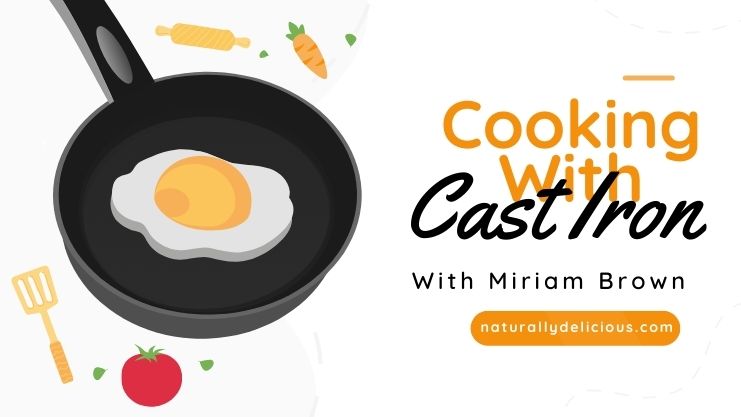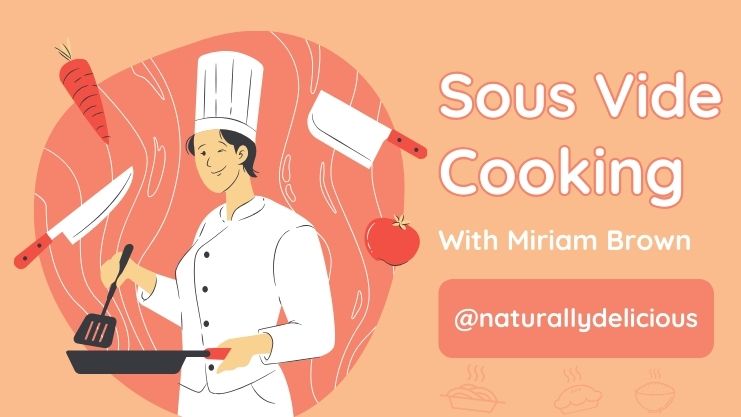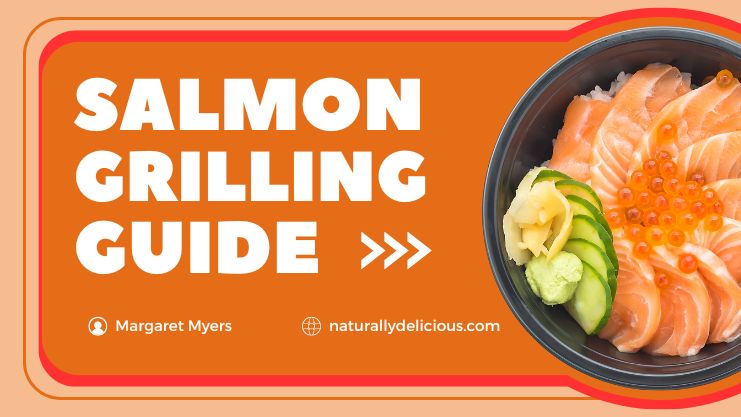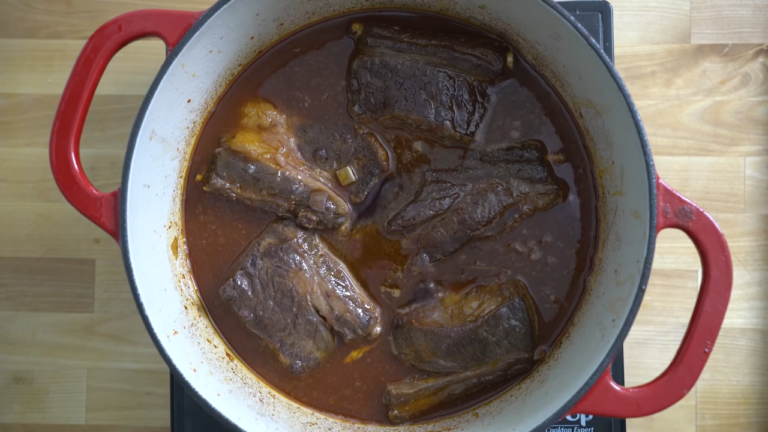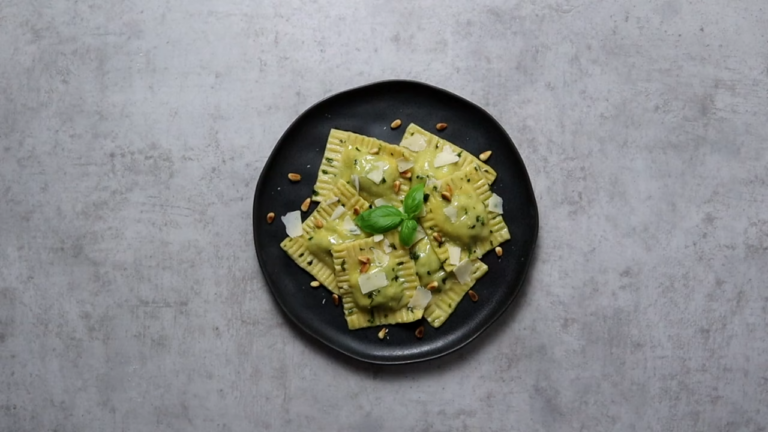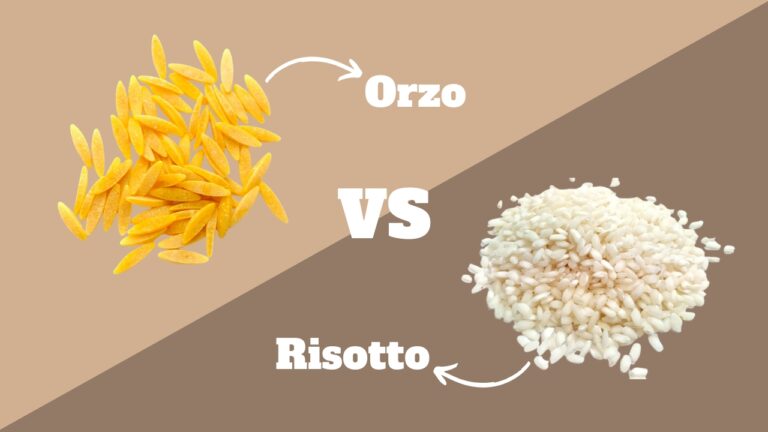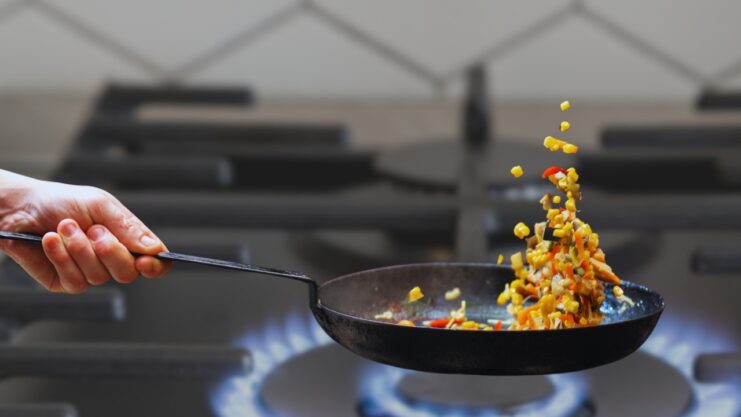Sautéing is the culinary equivalent of speed dating. You’ve got a hot pan, a bit of oil, and some food that basically needs to get cooked pronto without getting the chance to soak in its own juices.
The term comes from the French word “sauté,” which means “to jump.” And no, your food won’t actually leap out of the pan—though that would be a sight. It refers to how the food should move in the pan, thanks to your nifty wrist action.
Today, I will explain to you how this process works and how to do it masterfully. Let’s begin, shall we?
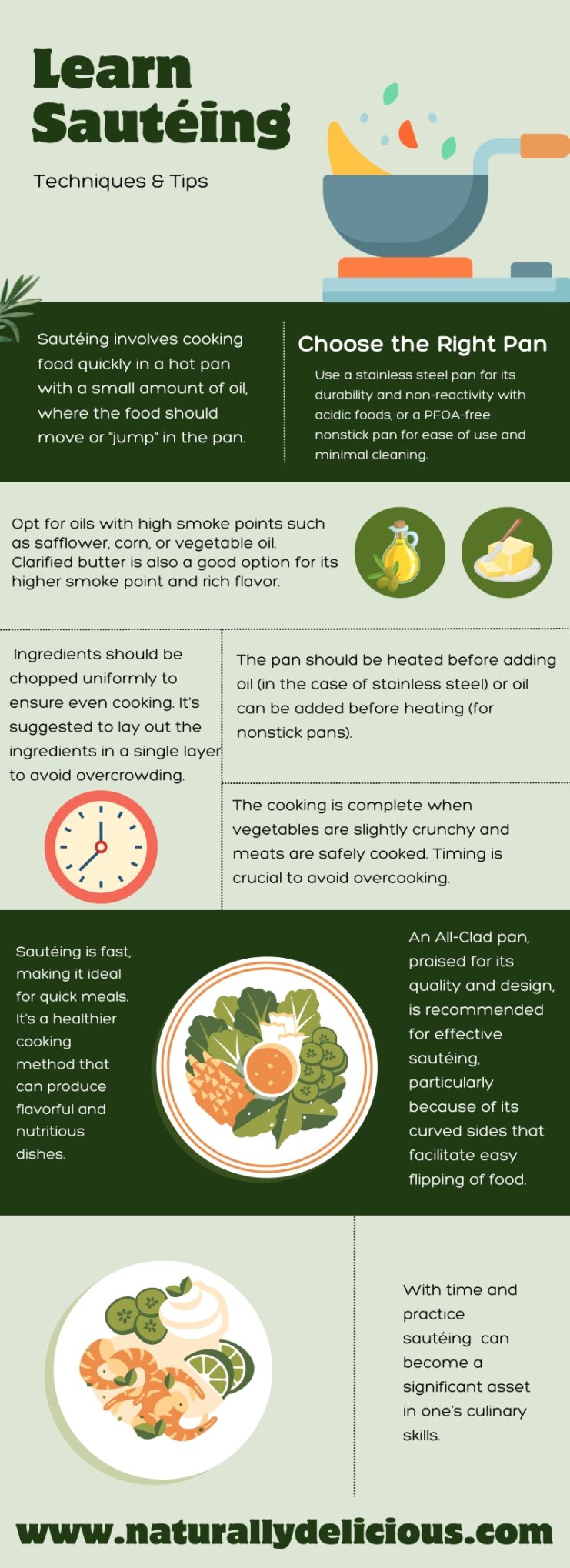
Gearing Up Process
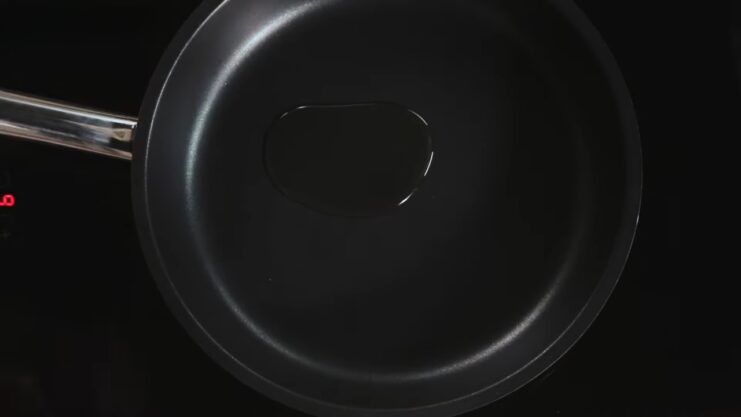
Picking the Right Pan
You can’t just grab any old pan. Sautéing is a process that requires appropriate tools. Here are the options:
- Stainless Steel: Tough as nails. It doesn’t react with acidic foods.
- PFOA-Free Nonstick: Basically, the pan that tries to ensure your food doesn’t glue itself onto it. Great for beginners and those who hate scrubbing pans.
The Oil Spill
When it comes to sautéing, you better grab yourself some oil with a high smoke point. I’m talking safflower oil, corn oil, or good old plain vegetable oil.
And hey, if you’re feeling a bit fancy, why not go for the classy choice of clarified butter? It’s like regular butter that’s been through some finishing school, so it won’t turn into a fiery disaster as easily.
How to Start
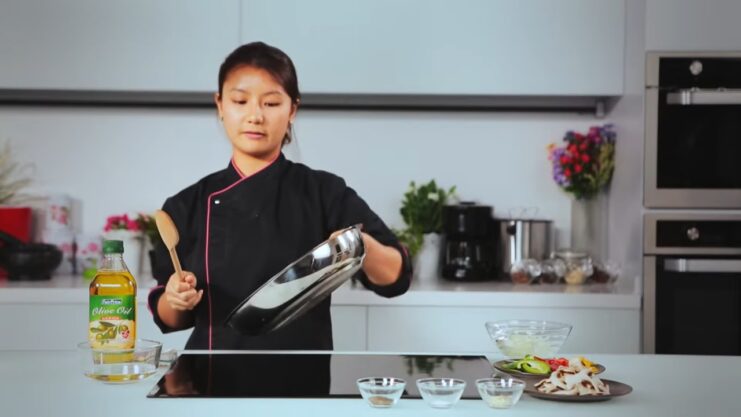
- Stainless Steel Pans: So, here’s the deal: you gotta let that pan get hot before you even think about introducing it to your precious oil. Timing is everything!
- Nonstick Pans: You can totally go against the rules and put the oil in first, and then heat it up with these. Nonstick pans are super-forgiving. They understand your rebellious nature and won’t hold it against you.
Food Toss 101
Prepping Your Ingredients
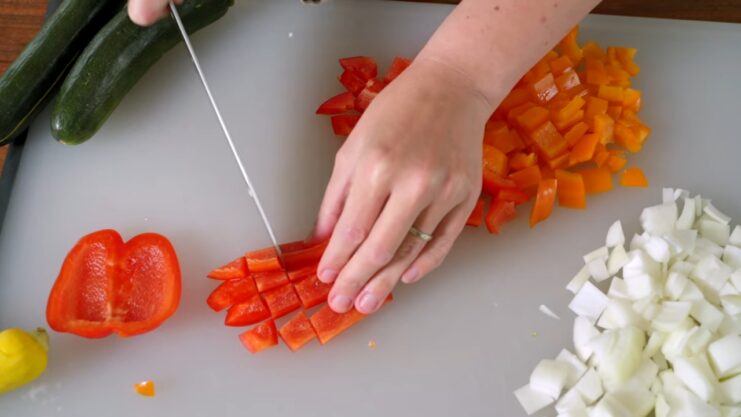
First things first, we need to chop everything up into uniform sizes. Consistency is key here unless you’re into playing the thrilling game of “Guess which piece of carrot will transform into mush first?”
Trust me, it’s not as exciting as it sounds. Next, grab that knife and make sure all your veggies are cut to the same size. We don’t want any lopsided surprises in our dish.
Now, here’s a little trick for you. Lay those chopped ingredients out on your cutting board, and don’t overcrowd them. We’re talking a single layer here. Give each little piece its own personal space to shine. After all, we want each ingredient to cook evenly and show off its flavors.
The Flipping Process
Grab your spatula or simply rely on your magical wrist flick. It’s time to send those ingredients soaring through the air! But be careful, watch out, and keep it in check.
We’re not aiming for the stars here, you just need some gentle flips to get the job done. Practice a bit, and you’ll get a hang of it in no time.
When to Finish Everything Off
Don’t just stand there! When your grub appears all cooked up (veggies still retaining a bit of crunch, and meats reaching those safe temperatures), it’s time to bid farewell to that pan and finish everything.
Why You Should Seriously Consider Sautéing
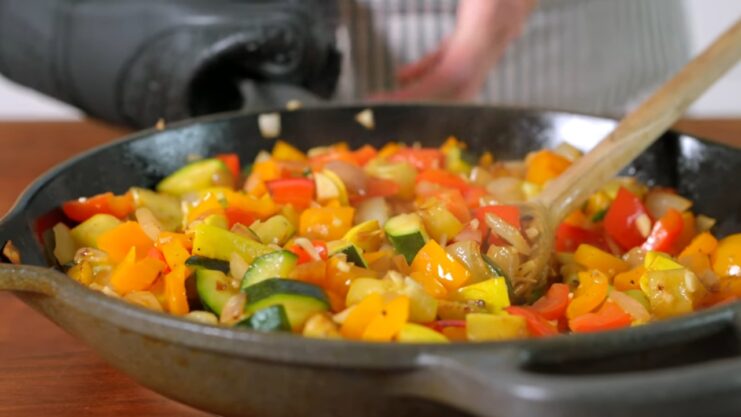
Sautéing isn’t some fancy dance move or a hobby for the elite cooks. Nope, it’s actually a nifty technique that can save your sorry midweek dinners. Trust me, I’ve got the inside scoop.
First reason you should consider learning it–sautéing is quick. I mean, lightning fast. None of that slow-cooking nonsense. You want your dinner on the table pronto? This is the technique for you.
But if you ever want to delve into the realm of rich, deep flavors, consider exploring braising basics. It’s like the slow dance counterpart to sautéing’s quick step, offering a luxurious depth to your dishes that’s worth savoring, especially on those cozy weekends or when you’re craving something truly indulgent.
It’s also relatively healthy. Yeah, you heard me right. With the right ingredients and a touch of finesse, you can whip up a nutritious meal that won’t leave you feeling like a greasy mess. However, the fact that it is healthy doesn’t mean it’s not tasty. On contrary, it’s very delicious, and it gives the food that special note.
Recommended Gear
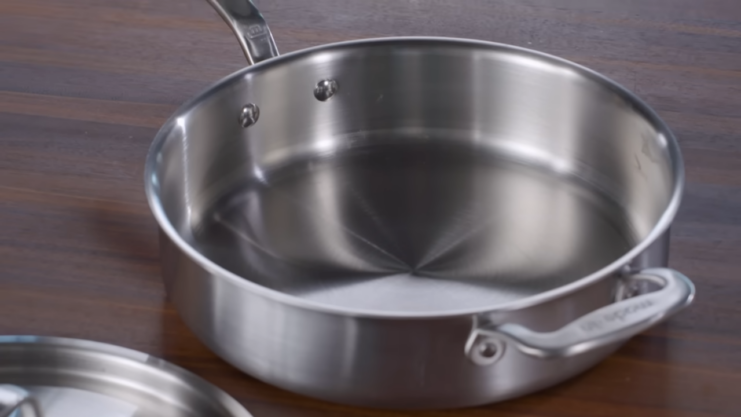
When it comes to picking a pan, my absolute favorite is All-Clad. They’ve really nailed it with their stainless steel and nonstick options.
Why do I love them so much? Well, it’s a beautiful combination of top-notch quality and wallet-friendly prices.
And hey, let’s not forget about those fancy curved sides on their skillets. They make flipping your food a breeze, which is a very important thing to have for autéing. Of course, this is just my choice. There are many quality options on the market nowadays, but as for me, nothing quite beats those All-Clad pans.
Closing Thoughts
Well, congratulations! I’ve equipped you with the fundamentals and a few expert tricks to make your next dinner much more enjoyable.
Sautéing, my friend, is a must-have skill that is vital for chefs. It’s all about cranking up the heat, using quality oil, and getting things done in a jiffy. The speed that which this technique delivers is awesome when you want to prepare dinner fast, so it’s another bonus for busy cooks out there.
Try it, it’s super easy, and I guarantee you’ll love this technique. May your culinary creations be abundant and your post-cooking mess be delightfully minimal.

